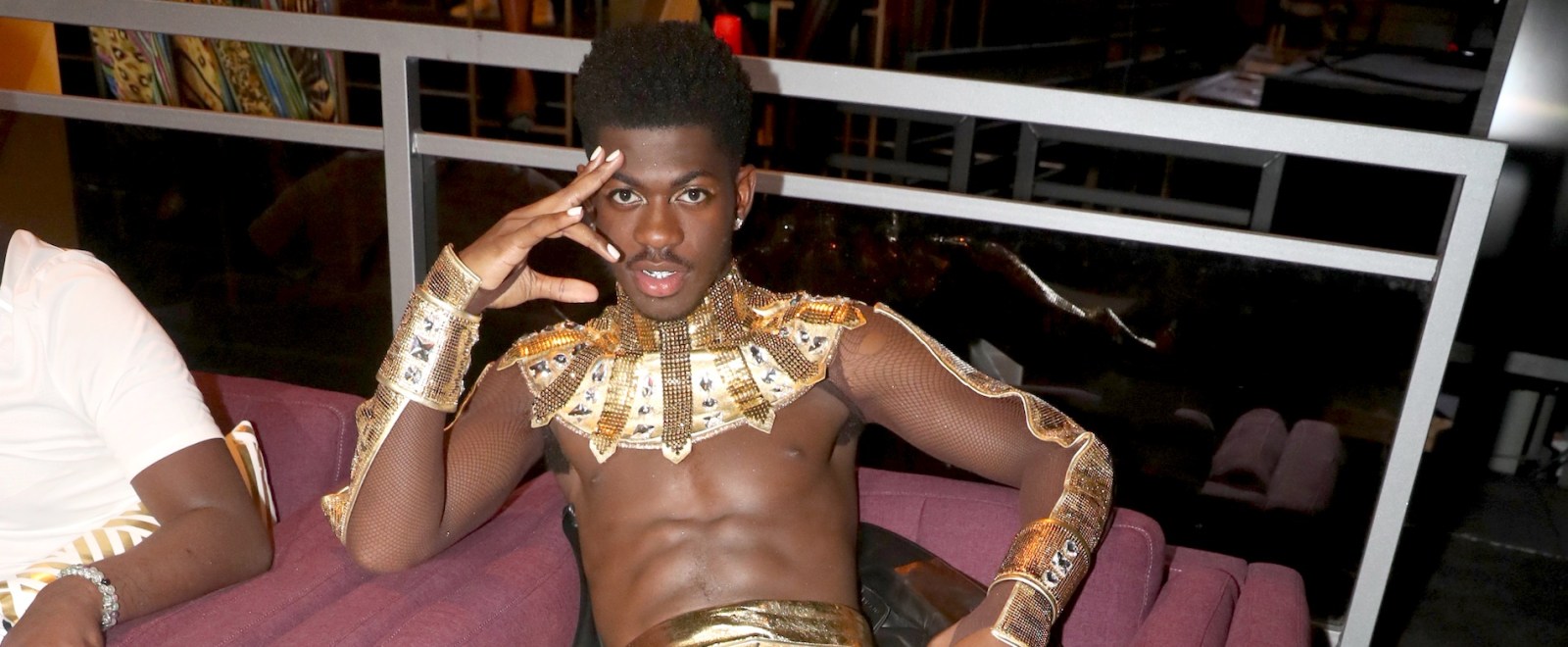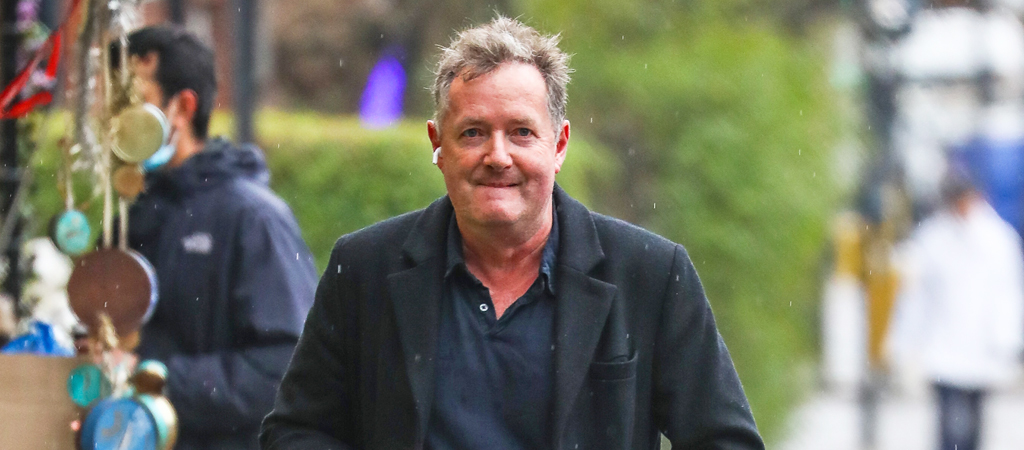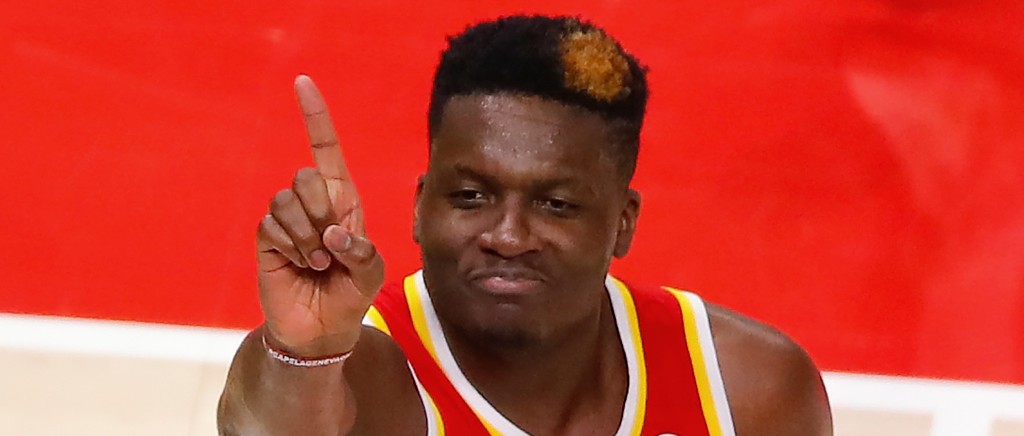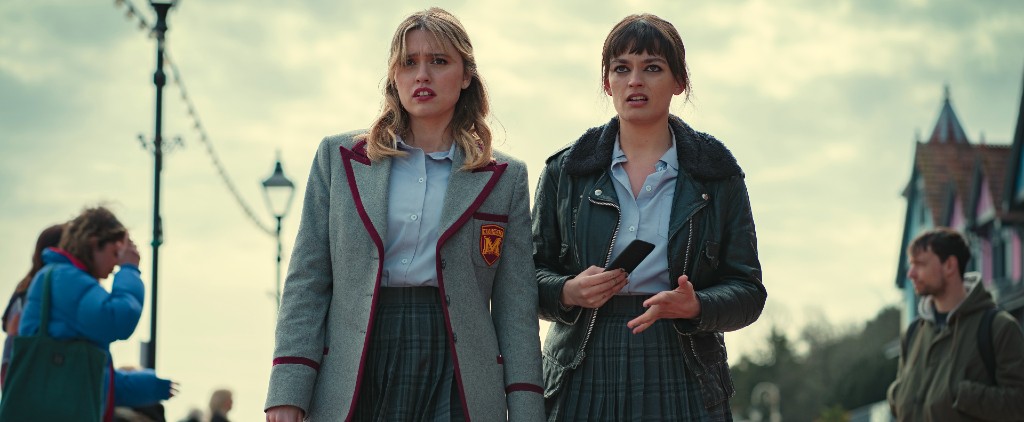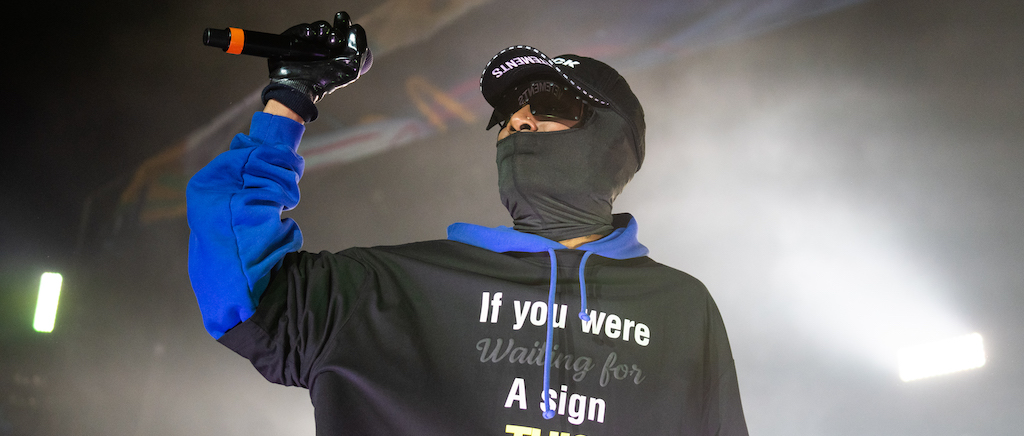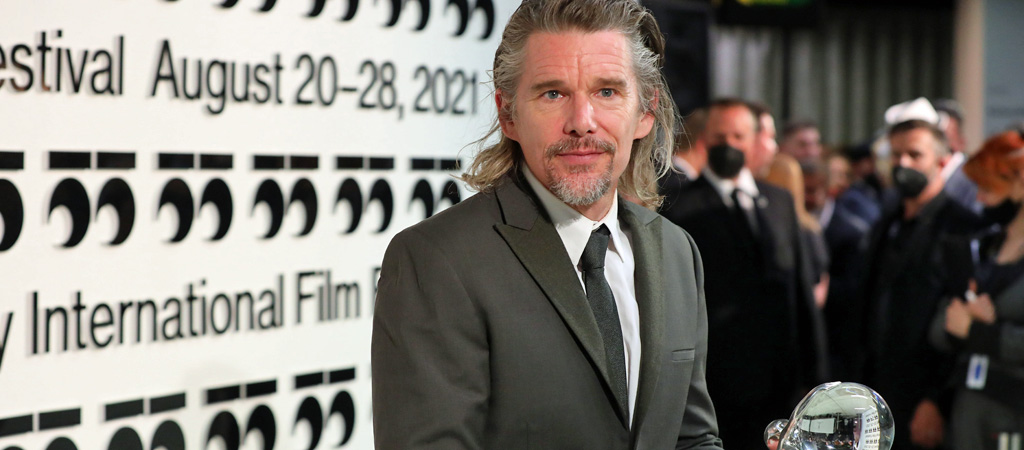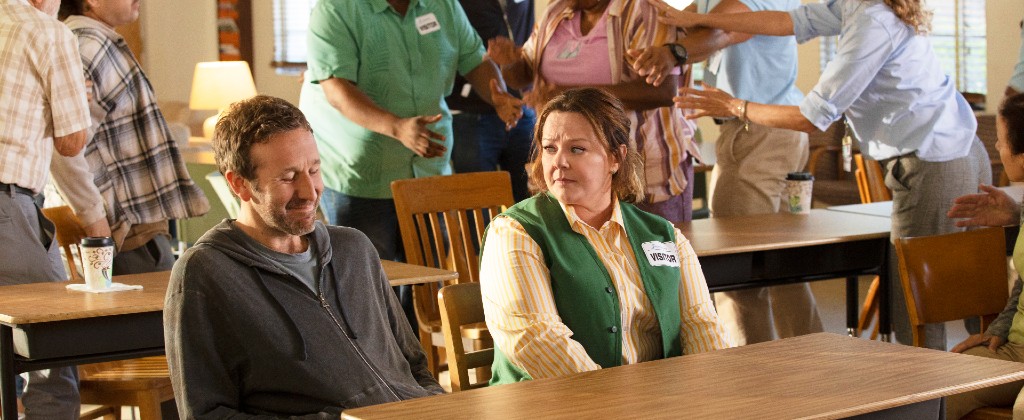
The RX is Uproxx Music’s stamp of approval for the best albums, songs, and music stories throughout the year. Inclusion in this category is the highest distinction we can bestow, and signals the most important music being released throughout the year. The RX is the music you need, right now.
24-year-old songwriter Indigo De Souza isn’t defined by any one thing. Though she grew up in a tiny conservative town in North Carolina, her vibrant style and open-mindedness prove she’s anything but a small-town girl. When it comes to her music, De Souza doesn’t stick to just one genre. Her sophomore album Any Shape You Take moves fluidly from sparkling pop to somber suburban emo, mimicking how each song encapsulates a range of emotions from heartbreak and loss to unbridled love and endless joy.
Any Shape You Take was born out of a period of intense loss and existential crisis. But rather than let her experiences spiral into Nihilistic tendencies, De Souza was instead reborn with eternal compassion for both herself and those around her. Exploring this newfound tenderness, Any Shape You Take details love in all its forms, surveying the importance of self-love, platonic love, and romantic love in her life. “I was inspired by the idea that real and healthy love is when someone loves you through all of the changes that you undergo,” De Souza said over the phone ahead of her album’s release. “And whether you’re heavily in their life or not, they still have this place of love and acceptance for what you are and what you’re becoming.”
De Souza hasn’t always felt the warmth of love and acceptance. Growing up in a conservative town of just over 2,000 people with a boundary-pushing visual artist mom, De Souza oftentimes felt out of place. “It felt as if something was very wrong with us,” she recalled. “Visually, it was so obvious that we were the only people that were adorned with these colors and these crazy things.” At the time, her shyness wasn’t helped by her mom’s fearless and unapologetic individuality. De Souza recalls being picked up from school in a beat-up pickup truck outfitted with naked Barbie dolls and plastered with the names of countries America has bombed over the years. Or, the times her mom would display her sex-positive Kama Sutra-inspired cartoons to conservative community members, who would promptly leave the gallery disgruntled.
Upon reflection, De Souza is grateful for her mom’s lessons of defiant self-expression. She now translates this to music through the clever use of her voice as an additional instrument. Her Auto-Tuned vocals on the album-opener “17” distort and bend over a synth’s low hum before a bouncing beat catapults the song into a glistening pop tune. On “Real Pain,” De Souza’s yelps and wails mirror her lyrics’ mournful breakup ruminations. During the song’s bridge, the choral screams of her fans can be heard, who submitted intimate voice recordings to her over the pandemic. Screeching guitars melt into the ear-piercing shrieks of collective pain, creating a cacophony of unsettling noise that acts as a relatable metaphor for the past year.
Along with using her voice in inventive ways, De Souza is unafraid of honesty in her lyrics. Her song “Pretty Pictures” describes an unglamorous breakup story more common than popular romance movies lead us to believe, detailing a relationship that slowly fizzled out instead of ending in an explosive argument. Other songs like “Die/Cry” tackle the sometimes frightening feeling of intense love for a partner. Repeating the mantra, “I’d rather die than see you cry,” De Souza grapples with a love so overwhelming that she’d sooner put herself in harm’s way than see the other person discouraged.
De Souza detailed her creative decisions in a conversation ahead of the release of Any Shape You Take, discussing how her childhood, existential crises, and important relationships led to the creation of her captivating sophomore album.
As I understand, you grew up in a small town with less than 2,000 people. I can imagine that wasn’t the easiest environment to be raised in. What was that like for you?
Definitely not ideal. It was just very limiting and the people were not very accepting. There was an energetic idea that I needed to be a certain way to be accepted there. Rather than explore any expression that I wanted to, I didn’t feel free to do that, or uplifted to do that. Yeah, I think that was my main qualm with it. And I don’t think I even really knew that that was happening, or that I was being limited in that way until I left.
Was it a culture shock of sorts when you moved to Asheville? Or was it mostly a positive experience?
It definitely was a culture shock, but also a very, very positive culture shock. I realized for the first time [my town] was not the whole world and that people outside of Spruce Pine were very different, and that affected me very positively. I felt much freer to express myself. I felt celebrated. I rose to the occasion. I remember making a lot of new friends and feeling like my world had gotten much bigger and that there were many more possibilities.
You’ve talked a few times about how a lot of this album was inspired by existential crises that you had, the idea of mortality being one of them. What was that experience like?
I had a series of existential crises when I was in my teenage years. And it started with this one instance where I was at a festival with my mom and my mom was dancing under this light, this little canopy thing where people would play music. I was watching her dance and I noticed all of her bones moving underneath her skin as she was dancing. A little later, I gave her a massage and she was bouncing my arms because her body was hurting. I just became suddenly aware of the make-up of her body physically, and how fragile she was.
That woke me up. It almost felt like I was tripping on psychedelics, but I was actually not, I was just going through a series of cut-tos where I realized how sad I was gonna be when she died. And then I realized how sad I was going to be when I lost anyone that I love. And that I was absolutely going to lose everyone that I love and that everyone I love is going to lose everyone they love. We will all be experiencing loss throughout our whole lives, but at the same time, a lot of love. It triggered this awakening where I started to see things in a different way. I started to feel more grounded and more aware of people’s mortality and people’s humanity and I just started to see people with a lot more compassion and a pure sense of sadness for everyone that we are all going to have to weather so many losses. That’s with me every day.
On ‘Real Pain,’ you had fans send you voice memos of their screams. What was the original idea behind that?
I had thought of it before the pandemic, but I also didn’t have as many listeners. During the pandemic, I had a surge in listeners and people following along with what I was doing when I realized I didn’t have that many recordings. I also didn’t really know what I wanted to do with them fully yet, I just felt called to collect them for something on the album. And then, during the pandemic, it just kind of all came together. I realized exactly what I wanted to do with them. It felt so much more powerful to collect some more recordings from people who are all experiencing the pandemic. I wanted to know what was going on with them and how it was feeling for them. It was crazy to get those recordings, they were all so heavy. Some of them were just really funny.
Did some people talk to you in the voice recording and give you a message? Or was it mostly just people screaming?
Some people talked to me and some people just sent recordings but then attached a personal letter. It was interesting because some of the recordings that people sent were old recordings that they had on their phones for a while. Like, ‘I’ve had this recording of me having a mental breakdown in my car for years. I don’t really know why I even recorded myself. But this is the perfect thing to give it to and thank you for this.’ Those ones were the most excruciating to hear for sure. It was cool though because I really relate to that. I do that so much, I’ll just record things. I have a recording in my phone from a breakup. I’m just crying and explaining to my future self why I broke up with that person so that I don’t forget because I knew that I would forget and spiral back to them. That recording helped me to stay in line.
Speaking of that, you wrote “Kill Me” a while ago as a stream of consciousness that you recorded on your laptop and then revisited a year later. What was it like to listen to that after being more removed from that situation?
It’s was wild. The recording is a video. I was just kind of slumped over. It’s really darkly lit and I’m on the floor with my guitar lazily singing this string of words that are all rhyming and really dark. When I watched it, I was wild because I didn’t remember doing it but knew it was me singing the words. It felt like something I had done from a very deep state of the subconscious.
Did you surprise yourself by listening back and hearing some of those lyrics?
Yes. I remembering thinking, ‘This is really dark but also this is sick because this is a whole song.’ I was just writing down all the lyrics as I was listening. Then I started playing it live with a band and we added a chorus because at first, it was just a long run-on sentence with all the verses stringed together.
I love how your song “Hold U” is an ode to love and friendship. What was your inspiration behind the song?
I wrote the song a while ago. I was in a relationship with someone who was really special to me in many different ways. I was so amazed by how love can be so many different things and can change and take many forms with a person. You can choose to honor all the different forms that it takes. It can sometimes be romantic, or can sometimes be platonic, and there doesn’t need to be a limit to the ways that you could feel about a person.
For the video, I felt I should involve the community around me that is so vibrant and beautiful. It really reflects that idea. All of the people in the video are my community and my friends. They’re just so sweet to each other. I get emotional when I watch the video too because we barely directed them much. We were kind of all just having a good time and doing what we always do. It was also filmed in my house, in my bedroom, and in all those spaces so it felt very personal.
Is there a specific track on the album that holds a special place in your heart?
Probably “Real Pain” because I’m always trying to connect with my audiences. Music gives me the opportunity to help people feel seen even though I can’t personally meet them and be a part of their lives, water a relationship with them, and create a safe space for them to be. But music gives me an opportunity to create that through sound. That song feels really special because I did what I am trying to do with music.
Any Shape You Take is out now via Saddle Creek. Get it here.

